
Kribs are small, colorful cichlids that have become a staple of the hobby. These inexpensive and readily available fish are known as "kribs” because they were originally imported as Pelmatochromis kribensis. They may be familiar — but that doesn’t mean they’re particularly easy.
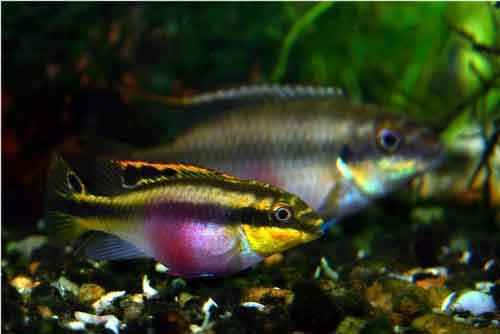
Kribensis. Photo by Wikipedia
Sexing them sounds easy on paper, but the sheer variability of the species can make it more difficult in practice. Pairs don’t always cooperate and spawn on demand, and often batches of fry are dominated by a single sex.
In this article, we’ll review these lovely fish, explore their breeding behavior and consider some of their cousins, such as Pelvicachromis taeniatus, which are widely sold. But to begin with, let’s look at the basics.
Kribs come from west Africa, particularly the freshwater rivers and streams around the Niger Delta. Although sometimes found in slightly brackish water, they are far less typical of estuarine habitats than Tilapia and Hemichromis. In fact, neutral, moderately hard water is ideal, particularly for breeding purposes.
They are bottom-dwelling fish that live among sunken wood and dense stands of aquatic vegetation, holding territories of about 2 square feet. In the aquarium, a single pair can rear a brood quite nicely in a 20-gallon tank planted with clumps of Java moss and Java fern. In terms of decoration, kribs take to hollow structures, such as caves, where they can set up their home. A sandy substrate also helps, allowing the kribs to root about in a natural way, sifting out morsels of food by shoveling sand across their gill rakers.
They are omnivorous cichlids, eating both plant and animal matter. Algae and decaying vegetation are important components of their diet in the wild and shouldn’t be overlooked in the aquarium. A Spirulina-based flake food would make an ideal staple, supplemented with small invertebrates (e.g., bloodworms) and live foods (e.g., Daphnia, brine shrimp).
Breeding the Common Krib
Kribensis Species Profile
Inoffensive midwater fish, such as small barbs and platies, can also be kept with kribs without problems. Midwater fish may serve a purpose as "target fish” by encouraging the pair to strengthen their bond as they cooperate in defending the nest. Aggression toward harmless fish (such as small barbs) is limited to shooing them away, and in a tank with plenty of space, no harm will be done.
Bottom-dwelling species, however, will be viewed by the kribs as potential threats and treated accordingly. Corydoras and small cichlids, such as Apistogramma, are likely to be attacked viciously and persistently, and these should not be kept with kribs. Plecos and Synodontis are largely krib-proof, but these armored catfish will readily eat any eggs or fry, so think twice before placing them in the tank.
The size and shape of the unpaired fins are the best characters for sexing kribs. Male kribs are larger (up to 3.5 inches) and have pointed fins, whereas females are smaller (3 inches), more rotund and have shorter fins. The two sexes display essentially similar coloration, but in males the colors are much less intense than those on the female. Both sexes have a purple patch on the belly, but on the male this is rather faint, whereas on the female it is very vivid, especially when spawning.
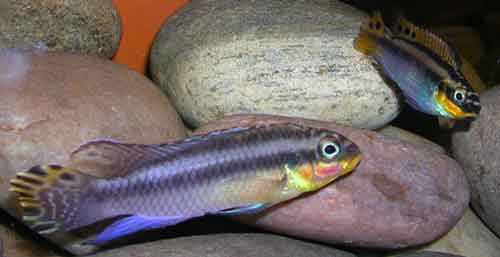
Similarly, both sexes have chocolate brown and golden bands running longitudinally along the top half of the body, but on the female these are much clearer and dramatic than those on the male. Often (but certainly not always), the male has several gold-edged eyespots on the tail and dorsal fins, whereas the female may have only one or two on the dorsal fin. But this characteristic is not at all reliable, with many fish of both sexes lacking these eyespots altogether. Both sexes sport eyespots on the gill covers, but those of the male are usually more distinct.
Breeding kribs is often described as a "just add water” sort of thing, but there is a bit more to it. The ratio of males to females in the brood is known to be pH sensitive, and only at pH 7.0 will approximately equal numbers of both sexes be produced. More alkaline water results in more males, and more acidic water means more females. It is possible (and actually quite common) for broods to contain almost entirely a single sex. Obviously, such skewed populations of fry are undesirable, and if your tap water is significantly more alkaline or acidic than pH 7.0, careful use of pH-altering buffering agents will be essential. Because kribs can’t be sexed until they’re two to three months old, it’s critically important to get the right pH in the spawning tank, because you’ll already have invested weeks of work in the fry before you know if you got the desired balance of males and females.
Water temperature is also important. Kribs can be maintained easily at around 75 degrees Fahrenheit, but raising the temperature to 78 to 80 will encourage them to spawn more readily. As always, be aware that warmer water contains less oxygen, so avoid overstocking, and if necessary, provide some extra aeration.
As with most other fish, even if water conditions are perfect, the prospective parents need to be "convinced” it’s time to spawn. Raising the temperature and then providing them with a rich diet should do the trick. Good conditioning foods include Daphnia, bloodworms, mosquito larvae and brine shrimp. These foods also help them put on a little fat, which will come in useful when they are caring for their offspring, during which time the female especially will eat less often than normal. The fish also need somewhere to spawn. Wild kribs dig burrows underneath logs or stones, but in aquariums they will accept almost any hollow ornament. Halved coconut shells and small flowerpots work particularly well.
The female initiates spawning by holding herself in an S-shape, pushing her belly against the male’s snout, and then vibrating her body and fins rapidly. She will repeat this many times over several days. They will also explore potential nesting sites together. During this time, they will become notably more intolerant of any other bottom-dwelling fish, acting in concert to drive off potential threats (and in the process further strengthening their bond).
Often the first indication that spawning has occurred is that the female suddenly disappears. She stays inside the cave guarding the eggs, while the male is left outside to patrol the territory. She will clean the eggs and remove any fungused ones. Brood sizes vary widely from as few as 30 eggs to as many as 300 in some instances. Hatching takes about two days, and the fry become free-swimming about five days after that.
At first, the female remains in sole charge of the baby kribs. She exhibits behaviors that can be observed in mouthbrooding cichlids, as well — in particular, a predisposition to collect straying offspring with her mouth and then spitting them back into the group where she can keep an eye on them. If alarmed, she will shake her head from side to side, and the fry will stop moving and sink to the bottom of the tank. After a while, it becomes more difficult for her to look after the fry on her own, and within a few days of the fry becoming free-swimming, the male will sometimes be left in charge of them while the female goes off to feed. An elegant adjunct to this behavior is that the "off-duty” parent doesn’t entirely neglect the brood, and if the parents feel threatened, one of the fish — usually the father — will swim ostentatiously in the open, presumably hoping to draw the attention of any potential predator away from the fry.
Kribs are almost always excellent parents. All the aquarist needs to do is ensure there is a steady supply of food and perform regular water changes to maintain good water quality. Powdered and liquid fry foods work exceptionally well with kribs. This alone makes kribs one of the best egglaying species for the newcomer to the fish-breeding aspect of the hobby.
Baby kribs also eat algae and microorganisms they find in the tank. The parents lead and herd them about, especially favoring tangles of Java moss where crumbs of food are easily found. The parents will also chew up large bits of food and spit out a cloud of finer particles that the baby fish can eat more easily.
The fry grow rapidly, and within three to four weeks, they will be able to handle crumbled flake and small frozen foods, such as bloodworms. After six weeks, the fry can be safely moved to another tank for growing out. Sex determination can be made at about 3 months of age, and kribs are sexually mature within eight months.
Kribs comfortably hold their place as one of the world’s most popular aquarium fish, thanks to their excellent balance of bright colors, small size and willingness to breed. They have plenty to offer anyone seeking an engaging and not-too-complicated introduction to the rewarding worlds of fish breeding and cichlid behavior.
 Aquarium Fish Hiding Places
Imagine having to spend an extended period in a room w
Aquarium Fish Hiding Places
Imagine having to spend an extended period in a room w
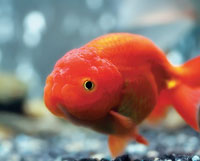 Finding Fancy Goldfish
Trying to find nice fancy goldfish like this in stores c
Finding Fancy Goldfish
Trying to find nice fancy goldfish like this in stores c
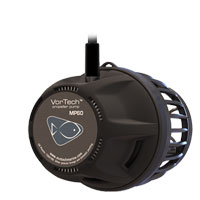 EcoTech Marine, Eheim, and Rolf C. Hagen (USA) Corp. Win Pet Product News International Editors Choice Awards
EcoTech Marine VorTech MP60.
Eheims Aquastyle Aquarium.
EcoTech Marine, Eheim, and Rolf C. Hagen (USA) Corp. Win Pet Product News International Editors Choice Awards
EcoTech Marine VorTech MP60.
Eheims Aquastyle Aquarium.
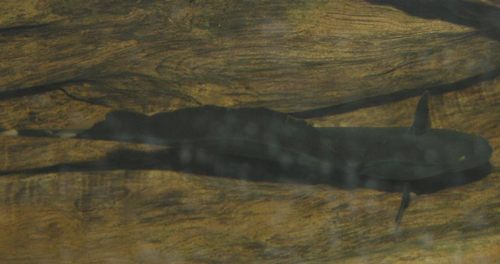 Choosing a Knifefish For Your Aquarium
The array of adaptations that have evolved in fish has resul
Choosing a Knifefish For Your Aquarium
The array of adaptations that have evolved in fish has resul
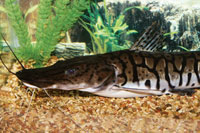 Shovelnose Catfish
Click image to enlargeShovelnose catfish.
Q. One of the w
Shovelnose Catfish
Click image to enlargeShovelnose catfish.
Q. One of the w
Copyright © 2005-2016 Pet Information All Rights Reserved
Contact us: www162date@outlook.com